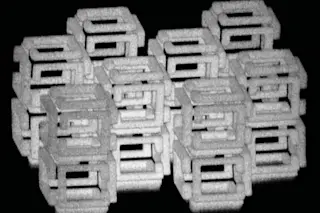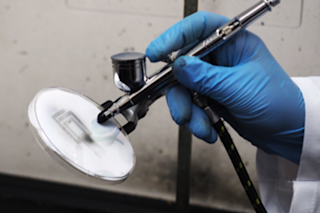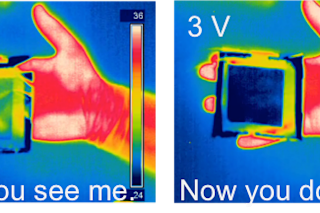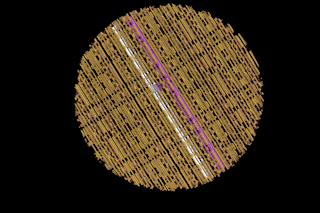A few years ago James Gimzewski built a tiny working abacus whose beads consisted of carbon molecules. Gimzewski readily admits that the device wasn't particularly useful; its purpose was to demonstrate how well his team at IBM's Zurich Research Laboratory could manipulate molecules. The latest example of their skill is a propeller fashioned from a single molecule (see image at right) that spins about 100 million times a second, a device that promises to be far more practical than their abacus.
Gimzewski didn't intend to build a propeller--he was trying to design a molecule that could change its shape in an electric field. Such protean molecules, he hoped, might form the basis for a new type of memory storage in computers, with different shapes of the molecule representing different bits of data. The molecules consist of rings of hydrogen and carbon that jut out like propeller blades from a hub of benzene, another carbon ring.
While working with a thin layer of the molecules that he had deposited onto a sheet of copper, he found that some started spinning spontaneously. He could see the molecules with a scanning-tunneling microscope, which makes images by dragging a fine needle along a surface. A computer generates a molecular relief map from the movements of the needle. When Gimzewski's molecules weren't moving, the microscope showed knobby clusters of molecules, as in the photo below. But when the molecules turn, they move too fast for the microscope to resolve individually, so the knobs blend together into a doughnut shape.
What makes the molecules spin? Gimzewski theorizes that the "blades" of one propeller are chemically attracted to the blades of a neighbor. But since the chemical bonds between the propellers are quite weak, just a tiny bit of thermal energy knocks the blades apart and they spin to another position.
The propellers may one day provide the designers of micromachines with a source of power for their creations. But because Gimzewski's propellers are so small--too small, in fact, to be added to any existing microdevice--newer, even smaller machines may have to be built around the propellers, molecule by molecule. "It's always been my opinion that micromachines are far too big, so if you can shrink them down, that's a great advantage," says Gimzewski. "Building a motor could be feasible with bottom-up fabrication; that's the approach nature takes."














